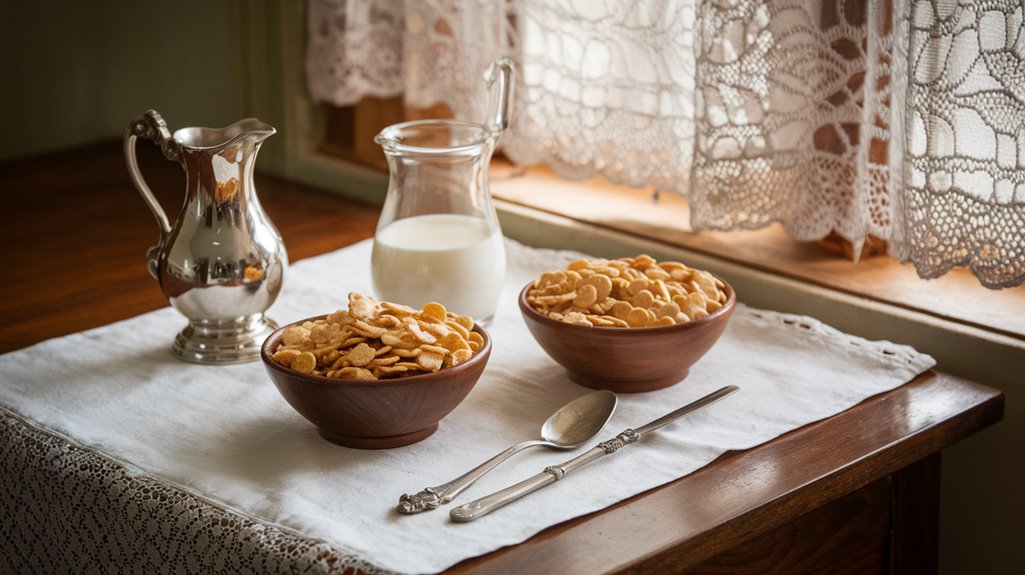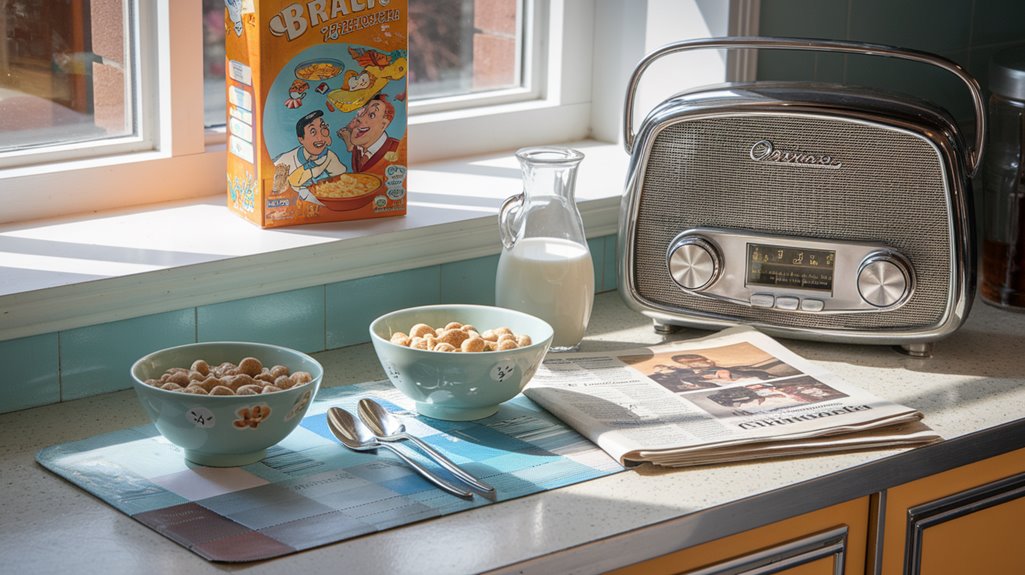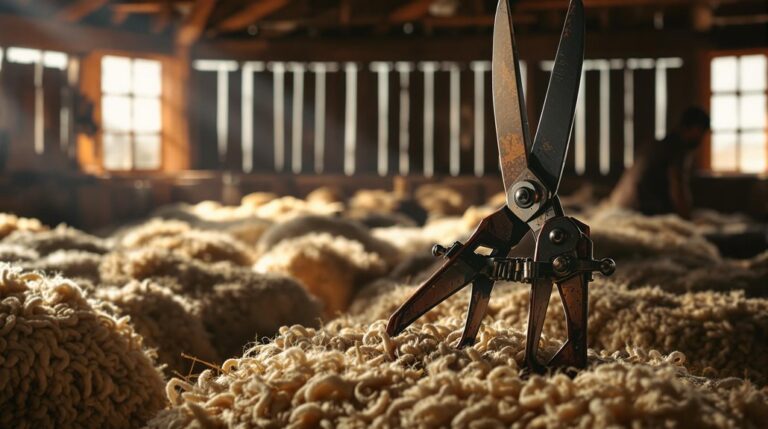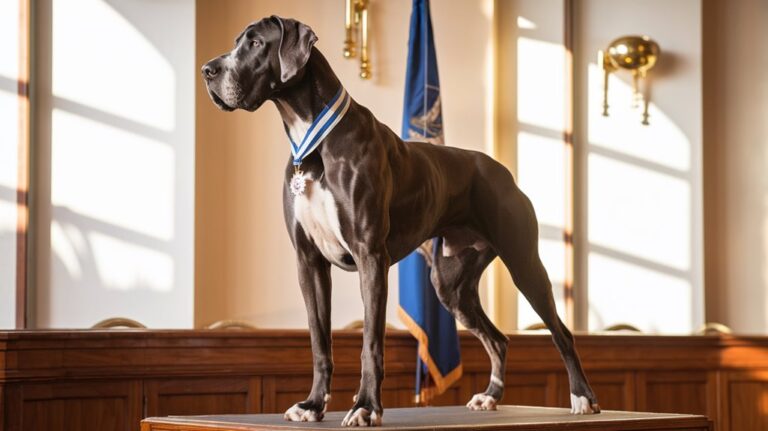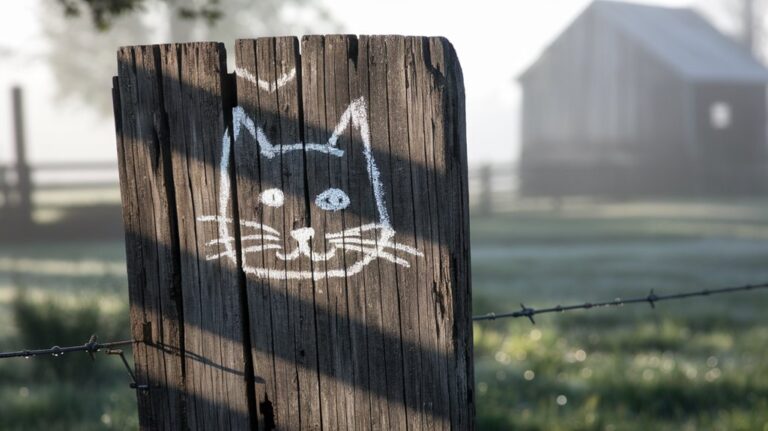Two Guys, One Breakfast: How Cereal Took Over Mornings
Like David and Goliath's legendary showdown, the battle for America's breakfast table began with two determined rivals in a small Michigan town. You've probably poured yourself a bowl of their legacy this morning without giving it a second thought. Yet the story of how Dr. Kellogg and C.W. Post transformed a bland health food into a billion-dollar breakfast empire isn't just about cornflakes and marketing—it's about how two fierce competitors accidentally changed the way you start your day.
The Battle of Battle Creek: Kellogg vs. Post
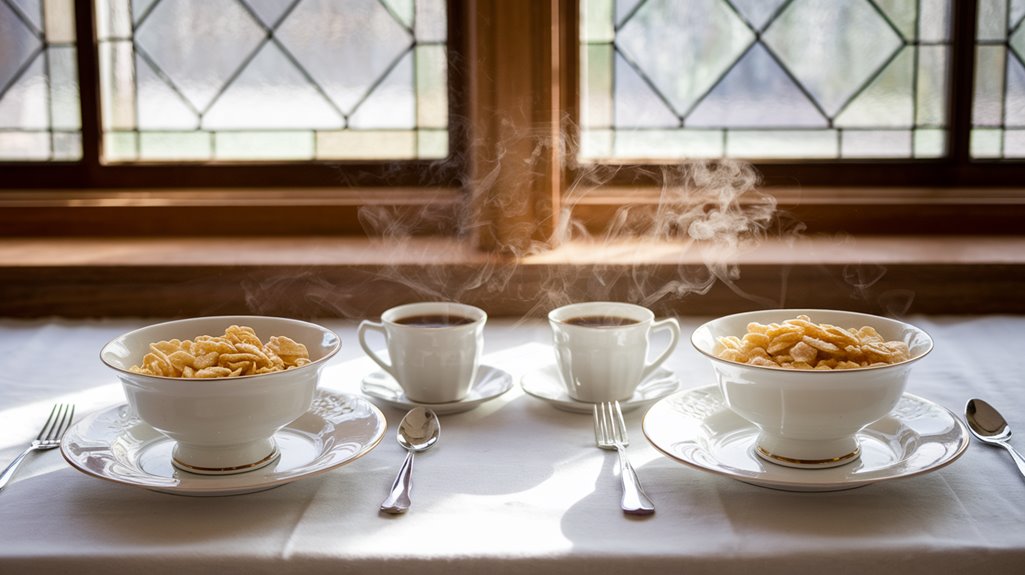
While Battle Creek, Michigan might seem like an unlikely birthplace for a breakfast revolution, it was here that two titans of the cereal industry emerged.
At the Battle Creek Sanitarium, Dr. John Harvey Kellogg and his brother William developed Kellogg's Innovations with their twice-baked granula, setting the stage for modern breakfast cereal.
The city's emergence as a cereal hub led to over 40 companies competing in the local market by 1910.
Today, visitors can experience the rich history by taking a Linear Parkway ride through the historic district.
But it was a former patient, C.W. Post, who first saw the massive commercial potential.
Post's Strategies included aggressive retail promotion and marketing of his products, Postum and Grape-Nuts, making him a millionaire by 1900.
This sparked an intense rivalry when William Kellogg launched his own company in 1906.
During the Great Depression, Kellogg doubled down on advertising while Post cut back, a decision that helped Kellogg emerge as the industry leader.
From Health Food to Sugar Rush: Cereal's Evolution
Though cereal began as a health-conscious solution to America's digestive woes, its transformation into sugary breakfast fare marks one of food history's most dramatic shifts.
You might be surprised to learn that pioneers like Kellogg's initially championed wellness and nutrition, focusing on whole grains and fiber content. Children now rank cereal as the second highest caloric source in their daily diets, trailing only dairy products.
But as consumer preferences evolved, so did cereal's identity. The health benefits of the original recipes gave way to ultra-processed formulations with increasing sugar content. Americans now consume an astounding 2.7 billion boxes of cereal annually.
While today's manufacturers are working to balance nutrition with taste – reducing sodium, adding protein, and fortifying with vitamins – the industry's trajectory reflects a broader cultural shift.
You'll find modern cereals attempting to recapture their healthier roots through whole grain options and reduced sugar varieties, though they're still a far cry from their wholesome origins.
Marketing Magic: How Cartoons Changed Breakfast
When cereal companies discovered the power of cartoon mascots, they revolutionized breakfast marketing forever.
You've probably noticed those friendly characters staring at you from the cereal aisle – that's no accident. Research shows kids' cereals are placed at an average height of 23 inches from the ground. The cartoon influence is carefully engineered, with characters positioned at children's eye level and gazing downward to create an instant connection. Manufacturers spend over $150 million annually to target children through these strategic marketing efforts.
This marketing strategy has raised questions about marketing ethics, as studies show children believe cereals taste better simply because their favorite characters appear on the box.
- Characters make direct eye contact with kids, building trust and brand loyalty
- Children perceive cartoon-adorned cereals as tastier, even when the contents are identical
- Companies invest heavily in these mascots, knowing they greatly impact purchasing decisions
These tactics have been so successful that they've sparked debates about regulation and childhood obesity prevention.
Generation Snap, Crackle, and Pop: Who's Eating Cereal Today
Those cartoon mascots of yesterday have shaped today's diverse cereal market, which has grown into a $41.12 billion global industry.
You'll find it's not just kids reaching for the cereal box anymore – working professionals, students, and health-conscious families are leading the charge in reshaping consumer preferences.
If you're like many modern consumers, you're probably looking beyond sugar-loaded options.
Today's market reflects your growing interest in whole grains, high protein, and fiber-rich alternatives.
Marketing campaigns with gleeful cartoon characters helped establish cereal as a breakfast staple, though consumers now enjoy it throughout the day.
You might even eat your cereal as an afternoon snack or late-night treat.
Health trends are driving innovation, with companies responding to your demands for gluten-free, vegan, and organic options.
Industry experts project the market will reach $95.32 billion by 2033.
Whether you're in New York or New Delhi, you're part of a global movement that's transforming how the world starts its day.
Beyond the Bowl: Modern Cereal Culture
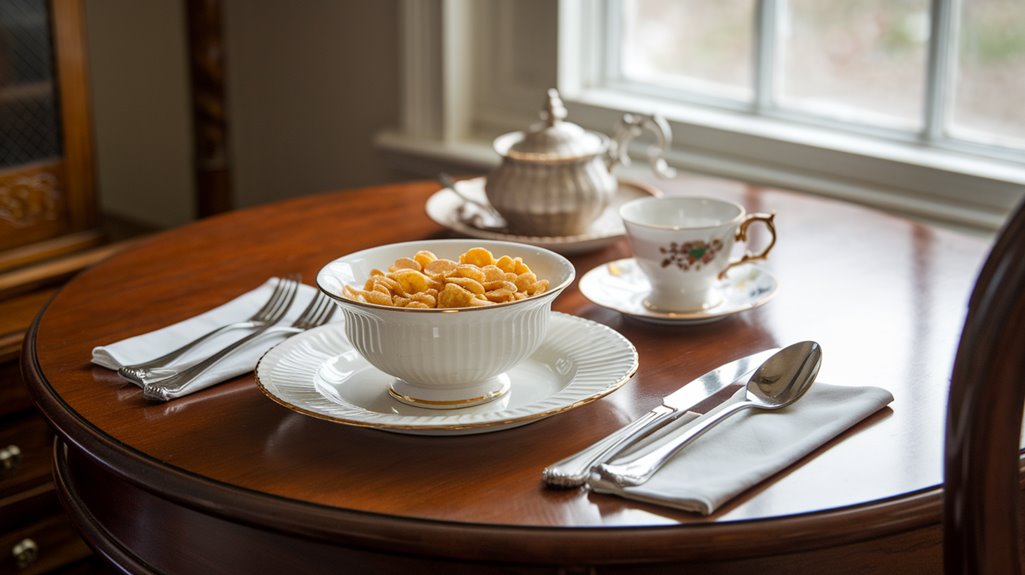
While traditional breakfast routines once dictated cereal's role, today's cereal culture has evolved into a dynamic, multifaceted phenomenon. Modern consumers prioritize flavor above all when selecting their cereals.
You'll find cereal nostalgia merging with modern convenience as brands tap into social media trends and innovative marketing strategies. The versatility of cereal has transformed it from a mere breakfast staple into an anytime treat, reflecting changing consumer lifestyles and preferences. This shift is particularly evident in Asia Pacific regions, where adoption of Western breakfast habits is driving unprecedented market growth.
 major companies controlling a significant portion of the market, fierce competition drives continuous product innovation. Consumer preferences are shifting toward natural ingredients and immunity-boosting formulas, while sustainability initiatives reshape packaging evolution across the industry. The industry faces critical challenges with ingredient availability issues affecting production and distribution.
major companies controlling a significant portion of the market, fierce competition drives continuous product innovation. Consumer preferences are shifting toward natural ingredients and immunity-boosting formulas, while sustainability initiatives reshape packaging evolution across the industry. The industry faces critical challenges with ingredient availability issues affecting production and distribution.
You're about to witness innovative flavors emerge, especially in Asia-Pacific markets where product development is booming.
Digital marketing is transforming too – you'll soon see your favorite brands in the metaverse. As you look for convenient, nutritious options, companies are responding with portable formats and functional benefits.
The future of cereal isn't just about what's in your bowl – it's about meeting your lifestyle needs while staying committed to health and environmental responsibility.

